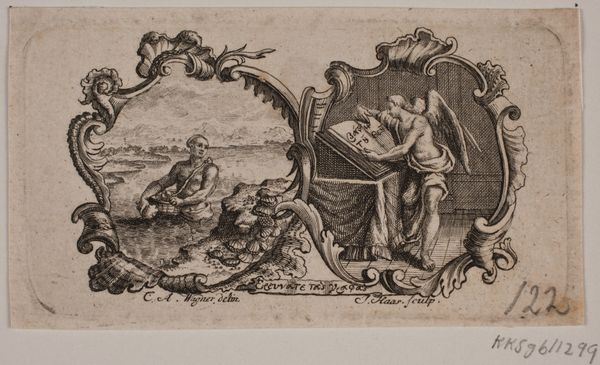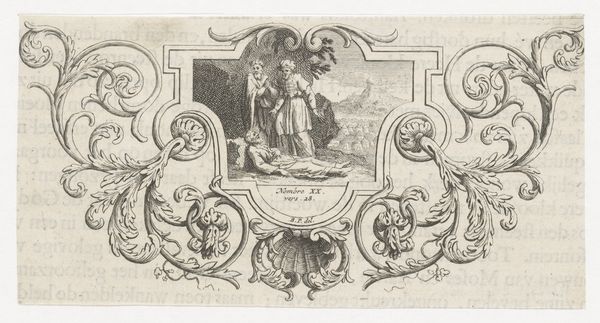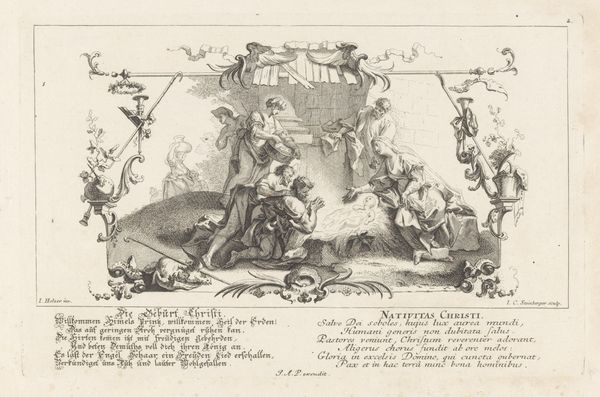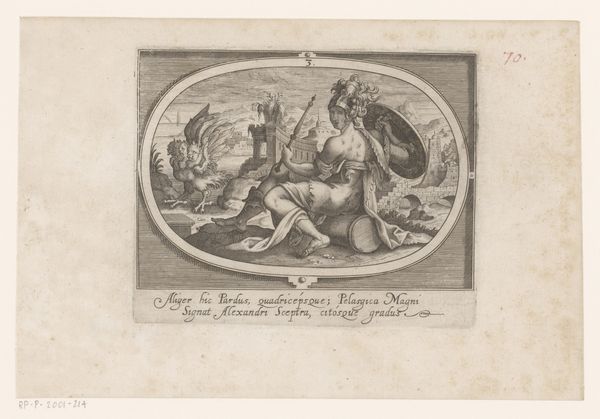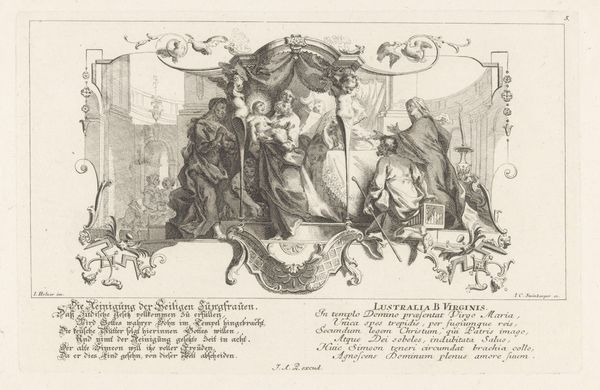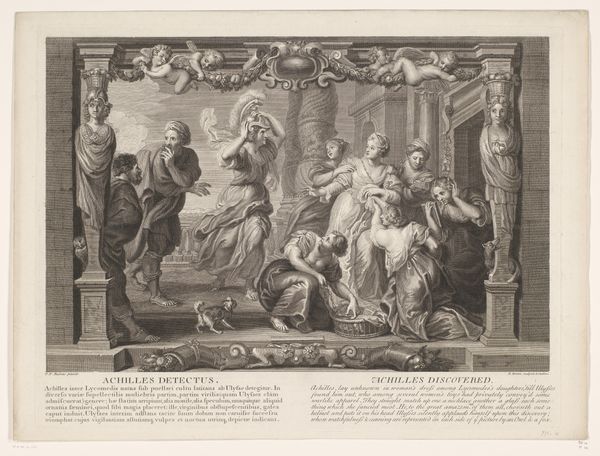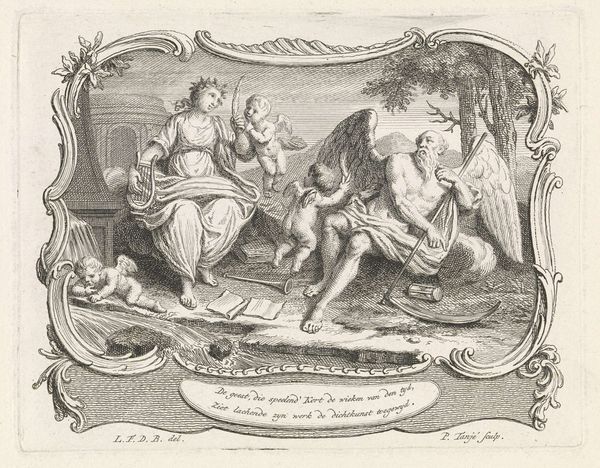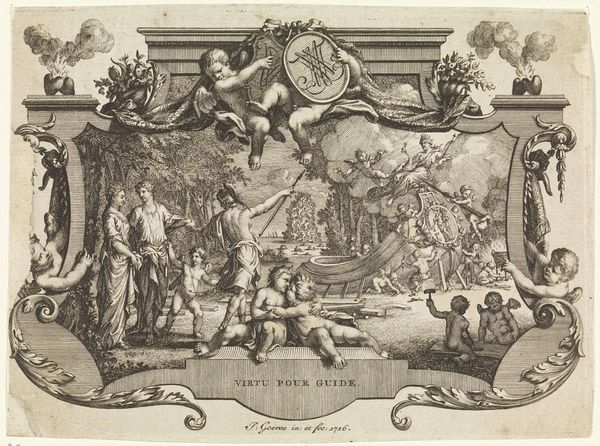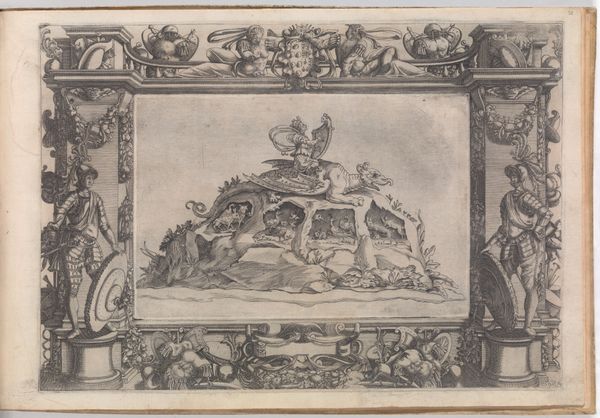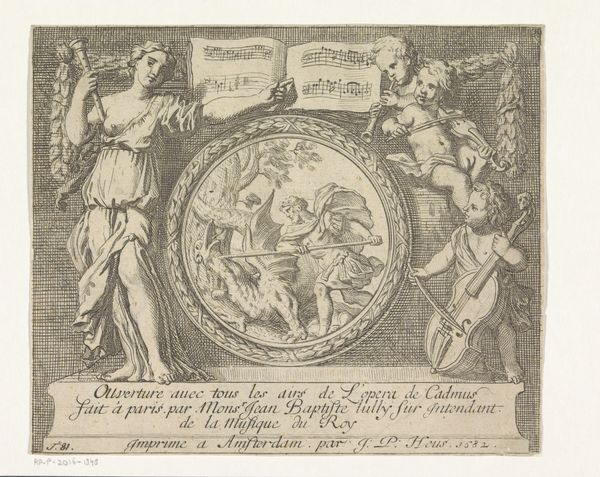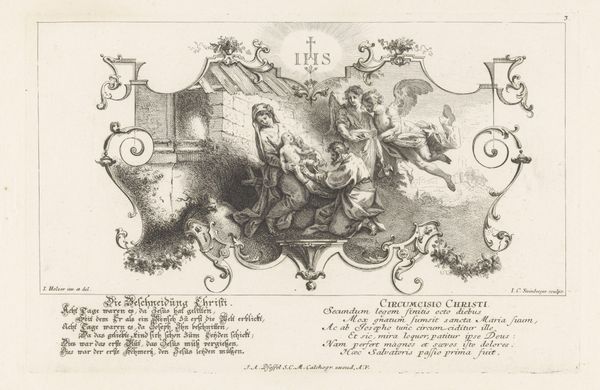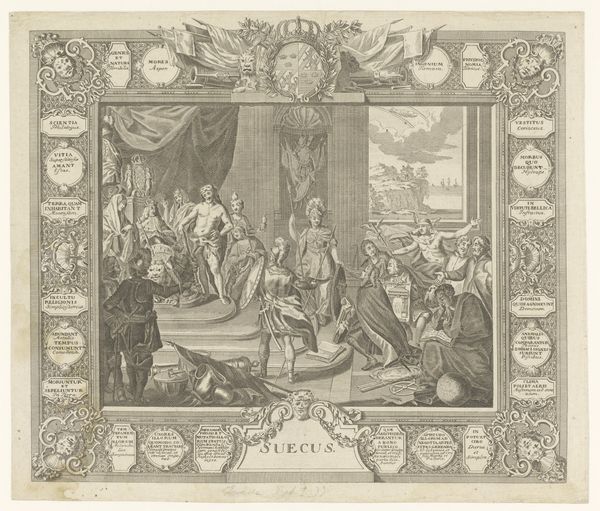
Boer en boerin tussen landbouwwerktuigen en vee als omlijsting van cartouche 1614 - 1664
0:00
0:00
boetiusadamszbolswert
Rijksmuseum
print, engraving
#
baroque
# print
#
old engraving style
#
landscape
#
figuration
#
line
#
genre-painting
#
engraving
#
realism
Dimensions: height 149 mm, width 239 mm
Copyright: Rijks Museum: Open Domain
Curator: Here we have a print, made sometime between 1614 and 1664, titled "Boer en boerin tussen landbouwwerktuigen en vee als omlijsting van cartouche", or "Farmer and wife amongst agricultural tools and livestock as a frame for a cartouche," by Boëtius Adamsz. Bolswert. Editor: It has a distinctly earthy feel to it, all that carefully rendered farm equipment surrounding the couple. A kind of robust stillness in the scene, despite the obvious labor suggested. Curator: Indeed. This image encapsulates a symbolic representation of rural life. Notice the farmer and his wife are positioned on either side of what looks to be an inscription, seemingly elevated or set apart from their implements, implying perhaps the inherent dignity and elevated status of agricultural work. Editor: That cartouche itself is quite elaborate. The details really highlight the skill of the engraver. The density of the hatching is so precise and creates an almost photographic depth within a small format print. Considering its original context – most likely mass production and distribution – it’s impressive the work is so detailed. Curator: Absolutely. Observe how the horse, the ox, the dog, even the cat are incorporated into the composition, surrounding the central couple and framing the cartouche. These are archetypes – potent visual shorthands. Each animal reinforces themes of servitude, fidelity, or prosperity. Editor: And those tools! A veritable inventory of early modern farming technology! That heavy yoke, the buckets, spades...you get a real sense of the physical reality of that life, and what’s required to simply exist in that setting. You can feel the strain on human and animal muscle just by looking at it. Curator: The image clearly presents labor in harmony with nature, elevated to a quasi-idyllic, perhaps idealized state through very deliberate symbolism. It speaks to enduring cultural values tied to land and harvest. Editor: For me, though, the raw depiction of materiality wins out. The engraving brings to life these early modern means of production, the realities of daily life, and the materials that composed the agricultural ecosystem. Curator: A compelling reminder of how carefully crafted images can condense complex histories and ideologies into something readily digestible. Editor: Definitely a great demonstration of labor’s beauty and intensity made permanent through the skill of early modern printmaking.
Comments
No comments
Be the first to comment and join the conversation on the ultimate creative platform.
